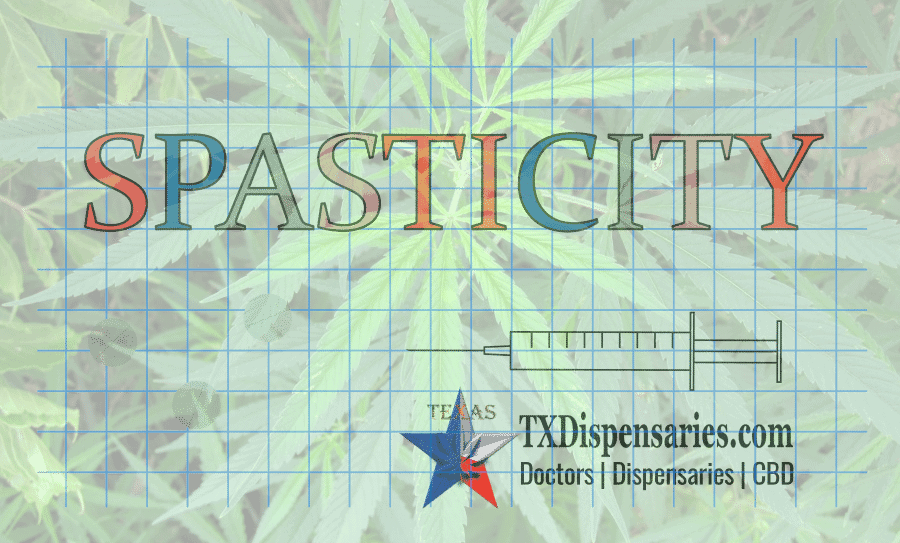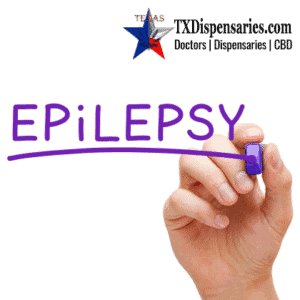
Treating Spasticity With Medical Cannabis in Texas
-
Medical marijuana legally be used to treat spasticity in Texas
-
It is effective at relieving involuntary motor reflexes
-
Manifestations and causes of spasticity as well as traditional treatments
-
How Texans suffering from spasticity can get a MMJ certification
What Is Spasticity?
Spasticity is now one of the qualifying conditions to get a medical marijuana card in Texas, which is more of a doctors prescription and not a physical medcard at this time. This is great news for patients suffering from a number of different ailments that produce this debilitating condition. Many patients in Texas are finding some relief from spasticity with medical marijuana.
So, what is spasticity, and how does cannabis work to reduce the muscle cramping and involuntary movement characteristic of the condition?
Spasticity is characterized by a lack of muscle control. It often causes involuntary movement — spasms — but it can also result in extreme stiffness and rigidity, drastically diminishing range of motion and causing extreme pain.
In order for humans to stand up straight, walk, talk, and so on, the body must maintain a balanced tension in the muscles. Changes in tension brought on by nerve damage can cause muscles to become rigid or to twitch uncontrollably.
Muscle spasms may be isolated or come in clusters and often manifest in the limbs and the torso. Patients suffering from spasticity often have trouble walking and postural issues such as tilting or slouching. It can also result in impaired speech. And activities like swimming or driving a car can be hazardous.
Spasticity can also contribute to loss of bowel control. It can also result in insomnia due to extreme pain. The condition has also been known to cause bone and joint deformities in children.
Spasticity is a symptom of neurological damage and is not terminal in and of itself, however, some of the causes of spasticity are incurable and potentially life-threatening.
Causes of spasticity
The most prevalent cause of spasticity is the interference of signals between the nervous system and muscles. Certain disorders such as cerebral palsy, spinal cord, and traumatic brain injury, stroke, and MS can also cause spasticity.
Multiple Sclerosis
Multiple Sclerosis is a common cause of spasticity. MS occurs with the loss of myelin, the protective sheath covering spinal cord nerve cells. When the nerve cells are exposed they are damaged beyond repair, causing disruption and distortion of signals between the brain and corresponding muscles. It is this disruption of messages that causes muscles to stiffen or spasm involuntarily.
As the disease progresses, MS patients often experience extremely painful contractions and ultimately lose all precise coordination, mobility, and motor control.
Cerebral palsy
Cerebral palsy can also cause spasticity. This is a neurological condition that usually occurs at birth, due to brain injury or malformation, but some individuals may develop CP later in life if a head injury is sustained. When the regions of the brain responsible for movement are compromised or damaged, this can result in spasticity.
Spasticity can also result from an injury to the brain or spinal cord. The brain sends signals to the muscles to contract or relax through the spinal cord. Any damage to the brain or the nervous system causes a breakdown in the network and scrambles the message. Studies indicate that approximately half of brain injury patients will develop some form of spasticity. The severity of spasticity is generally directly related to the extent of the injuries.
Brain Injury & Spinal Cord Injury
Spasticity, another Texas qualifying condition, can also result from an injury to the brain or spinal cord. The brain sends signals to the muscles to contract or relax through the spinal cord. Any damage to the brain or the nervous system causes a breakdown in the network and scrambles the message. Studies indicate that approximately half of brain injury patients will develop some form of spasticity. The severity of spasticity is generally directly related to the extent of the injuries.
Traditional Treatments For Spasticity
-
Baclofen (Lioresal®)
-
Tizanidine (Zanaflex®)
-
Dantrolene sodium (Dantrium®)
-
Diazepam (Valium®)
-
Clonazepam (Klonopin®)
-
Gabapentin (Neurontin®)
Treating Spasticity With Medical Marijuana
Multiple studies have been initiated to test the efficacy and safety of cannabinoids on neurological conditions causing spasticity. The results vary greatly, as much of the research involved small groups of MS sufferers.
However, reviews of multiple studies and the accumulating anecdotal evidence indicate cannabinoids might be effective in the treatment of spasticity and pain in some patients.
- One of the largest randomized control trials to measure the effect of cannabis on multiple sclerosis is the CAMS (Cannabinoids in MS) Study. Twice daily, for 15 weeks, 630 subjects from 33 locations in the UK were administered synthetic cannabinoids dronabinol or cannador, or a placebo. Those MS patients who were treated with cannabinoids reported a dramatic improvement in their levels of spasticity, spasms, and sleep, as opposed to those administered the placebo.
- In another comprehensive study by MUSEC (MS and Extract of Cannabis) researchers tracked perceived changes in patients’ level of muscle stiffness. For twelve weeks, 279 Multiple sclerosis patients received cannabis extract or a placebo. The patients treated with cannabinoids indicated twice the relief of those who were given a placebo showing improvements in chronic stiffness, spasms, and sleeplessness at both the 4- and 8-week marks.
- The American Academy of Neurology examined three dozen studies researching medical marijuana in treating epilepsy, MS, and other neurological disorders affecting movement. In the 2014 review, the authors were optimistic that oral cannabis extracts were effective in reducing spasticity and the resulting pain.
- After reviewing 24 other trials involving 2,321 spasticity patients, researchers reported that “several of these trials had positive results, suggesting that marijuana or cannabinoids may be efficacious for these indications.”
- In a 2015 review of more than 20 cannabinoid trials, The Journal of the American Medical Association reported that the “use of marijuana for chronic pain, neuropathic pain, and spasticity due to multiple sclerosis is supported by high-quality evidence.”
- A 2017 comprehensive review by the National Academies of Science, Engineering and Medicine reviewed more than 10,000 abstracts related to spasticity published before 1999. The compiled research showed “substantial evidence” of improvements in MS-related spasms with the use of cannabinoids.
- In a 2012 report published in Expert Review of Neurotherapeutics authors noted: “Results from randomized, controlled trials have reported a reduction in the severity of symptoms associated with spasticity… These are highly encouraging findings.
All in all, the findings suggest that cannabis can be effective for many patients seeking a natural, safe, and effective treatment for spasticity. However, much more research is needed to optimize the efficacy of medical marijuana for treating spasticity.
Cannabis Strains And Delivery Methods Available In Texas For Treating Spasticity
The choice of cannabis strains available to medical marijuana patients is severely limited at Texas dispensaries. Under current regulations, all medical cannabis products are required to contain less than one-half of one percent THC and a minimum of 10 percent CBD. But these high-CBD, low-THC strains do have their benefits and are often more effective than THC-free hemp CBD flower.
In addition to cannabinoids, compounds known as terpenes also contribute to the overall effects of a strain. The combined effect of cannabinoids and terpenes found in a medical marijuana strain is commonly known as the entourage effect.
To find the ideal strain with the ideal mix of cannabinoids and terpenes for their condition patients should discuss their needs with a Texas medical marijuana doctor as well as their local dispensary.
Various types of preparations are made using extracts of low-THC strains. These include:
Inhalation – smoking and vaporizing dried flower or concentrated cannabis extracts
Edibles – cannabis-infused candy, baked foods, etc. (diabetics, be aware of sugar content)
Tinctures/drops – cannabis-infused oils and drops
Capsules/pills – cannabis-infused gelcaps, softgels, and tablets
Topicals – cannabis-infused pain relief creams
How To Get Medical Marijuana For Spasticity In Texas
The first step for patients suffering from spasticity would be to visit a Texas-certified medical marijuana doctor. A quick phone call can usually help to determine if a patient qualifies for a Texas High CBD cannabis medicine for spasticity and set up an appointment for an in-person or online evaluation using medcard telemedicine.
Once an application has been approved, the physician will enter the patient’s name into the state’s patient registry. The patient will immediately be eligible to purchase medical marijuana from a Texas dispensary or via home delivery.

Sign Up for Medical Cannabis in TX
For potential medical marijuana patients we make it easy to connect with a recommending doctor online. You will also receive updates & news relative to medical marijuana in Texas. If you are interested, simply fill out the MMJ patient registration form to get started. Legal Residents Only.

MMJ Patient Registration Form

Sources and additional reading
- Cannabis for Spasticity in Multiple Sclerosis
- Cannabinoids in the management of spasticity associated with multiple sclerosis
- Marijuana And Muscle Spasticity
- Cannabis-based drug in combination with other anti-spasticity drugs may help to relieve symptoms of motor neuron disease
- Systematic review: Efficacy and safety of medical marijuana in selected neurologic disorders
- Health Effects of Marijuana and Cannabis-Derived Products Presented in New Report








